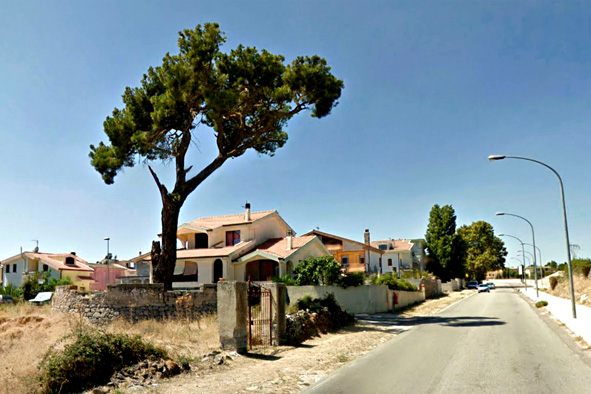
Grazia Deledda’s Pine
This post is also available in:
 Italiano (Italian)
Italiano (Italian)
Pinus pinaster (Pinaceae)
Originally from Nuoro, Sardinia, the famous writer Grazia Deledda loved to enjoy the shade of a maritime pine in the southern part of her beloved city, during the hot summer afternoons.
That very pine tree was probably destroyed by lightning in 1967, but another specimen which grows some 328 ft away, has actually become that very favourite tree of the famous Italian writer.
This pine is about 150 years old and seems to be mentioned in one of Grazia Deledda’s many books, the one called “Under the pine”. This tree, which features a bronze commemorative plaque, had to be felled years ago for safety reasons: it was, in fact, dangerously growing near some residential building and the main road. The citizens of Nuoro opposed the tree cutting and after a careful review, the municipal administration decided to spare the tree but to pollard its majestic top.
Today, visitors can admire this beautiful specimen of Pinus pinaster, imagining Grazia Deledda drafting one of her masterpieces sitting right under its shady branches or just a few feet away.
How to get there:
The tree is located in the Su Pinu district, in the southern outskirts of Nuoro.
Botanical sheet of the maritime pine
Maritime pines extend from the western Mediterranean Basin to the European Atlantic coast. In Italy, this species is present in almost all the regions, spontaneously growing in Liguria, Tuscany, Lazio, Sicily, and Sardinia, especially along the coastlines and in hilly areas up to 2.296-2.624 ft. of altitude.
This species is heliophilous, thermophilic and xerophilous. It prefers siliceous soils even if it’s also well-adapted to other types of soils. Saltiness is very well tolerated.
Maritime pines can grow in pure or mixed woods, along with other coniferous trees.
Given its ability to colonize poor and degraded substrates, it is often used as a forest species in many reforestation projects involving dunes, beaches and hill slopes.
Its wood is soft and very resinous, used for packaging and paper manufacture. In the past, the bark was cut to obtain resin and turpentine. Mulching materials is currently still obtained from the bark. Some parts of the plant, such as buds and sap, have healing properties and are used in herbal medicine and for pharmaceutical preparations.
Photo source: http://www.cronachenuoresi.it/2014/11/27/il-pino-di-grazia-deledda-e-i-gialli-deleddiani/
This post is also available in:
 Italiano (Italian)
Italiano (Italian)
Contatti
08100 Nuoro - Loc- Su Pinu(NU)
